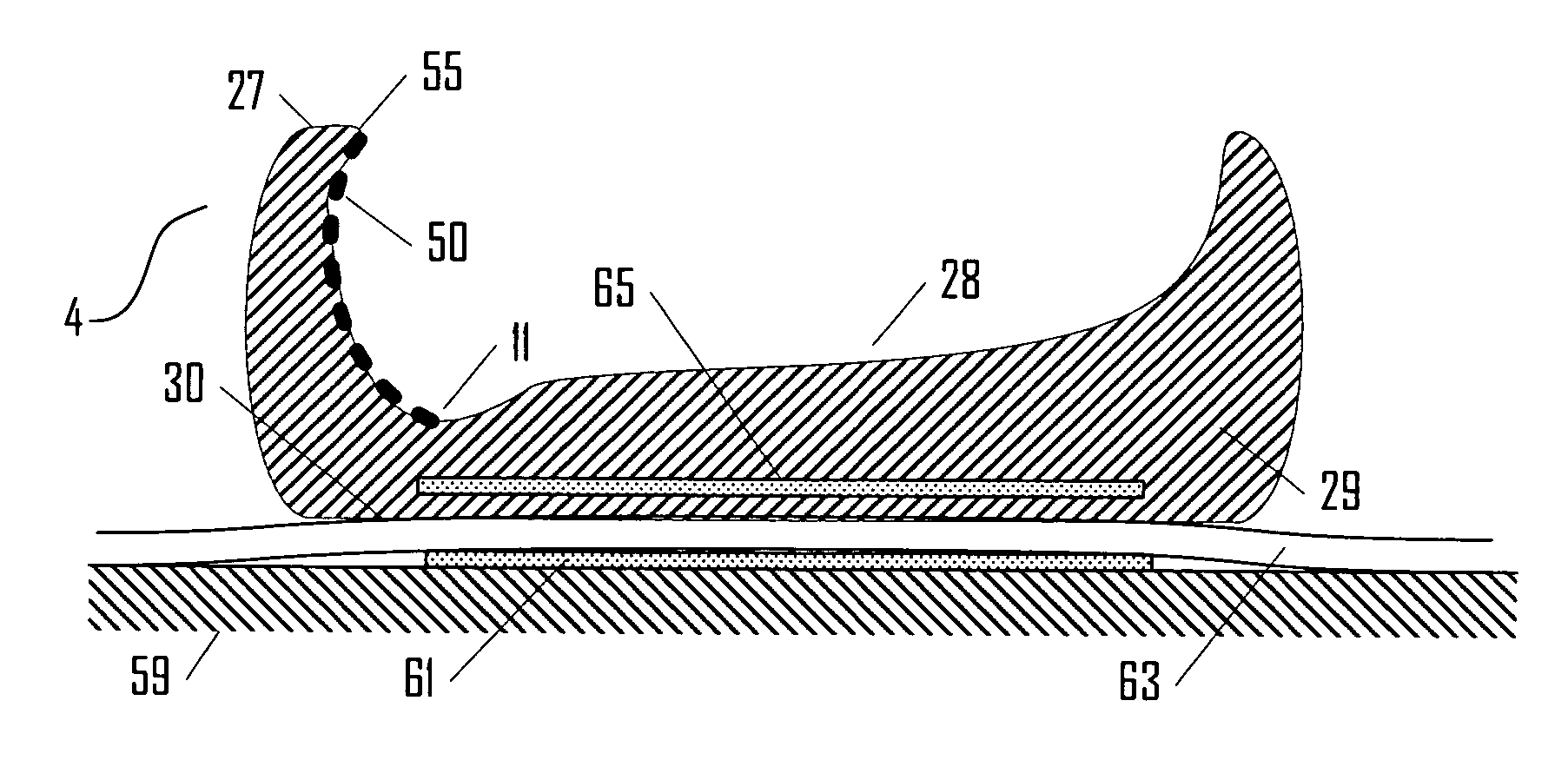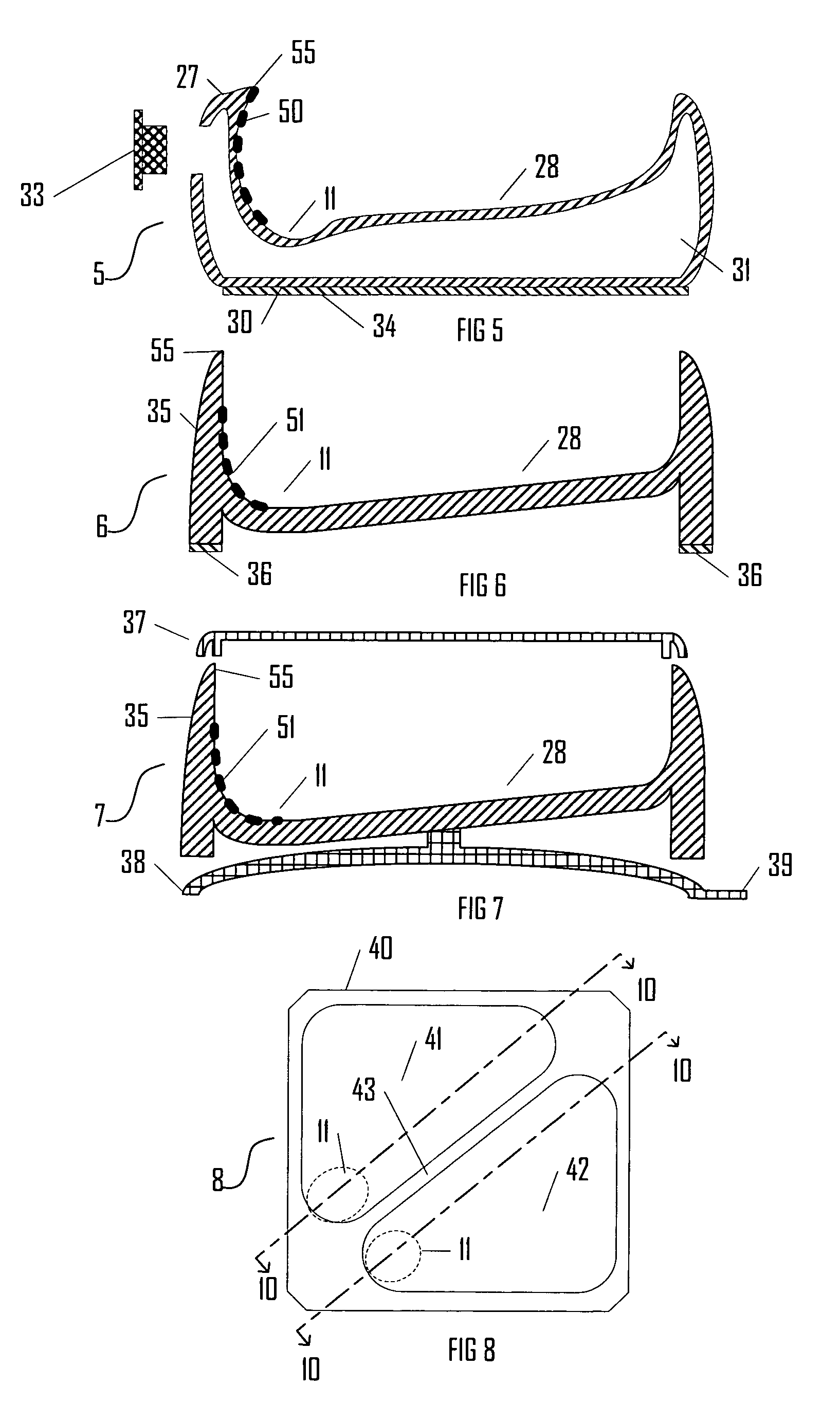Baby bowl
a baby bowl and bowl body technology, applied in the field of bowls, can solve the problems of affecting the ability to meet the needs of infants and caregivers, affecting the quality of infant feeding, so as to reduce messiness and the need, facilitate and efficiently collect, and minimize the effect of mess
- Summary
- Abstract
- Description
- Claims
- Application Information
AI Technical Summary
Benefits of technology
Problems solved by technology
Method used
Image
Examples
Embodiment Construction
[0027]This section discusses a variety of bowls according to the teachings of the present invention. FIG. 1 is a top view of a circular bowl 1 in accordance with the present invention. The circular bowl 1 comprises a circular rim 21 and a circular sloped surface 22. A cross-section axis 10 is a convenient axis on which to examine structural details of the circular bowl 1.
[0028]The circular sloped surface 22 terminates in a spoon-shaped locus 11. The spoon-shaped locus 11 is a minimum in the circular sloped surface 22 and has a shape and size substantially similar to that of a spoon. The spoon-shaped locus 11 is a depression that acts to help collect food in conjunction with not only the normal functioning of weight and gravitation, but also in conjunction with typical spoon use by an infant, caregiver or other person using the circular bowl 1. Natural feeding motion, drawing a spoon in strokes toward the spoon-shaped locus 11, will tend to accumulate, concentrate and collect food in...
PUM
 Login to View More
Login to View More Abstract
Description
Claims
Application Information
 Login to View More
Login to View More - R&D
- Intellectual Property
- Life Sciences
- Materials
- Tech Scout
- Unparalleled Data Quality
- Higher Quality Content
- 60% Fewer Hallucinations
Browse by: Latest US Patents, China's latest patents, Technical Efficacy Thesaurus, Application Domain, Technology Topic, Popular Technical Reports.
© 2025 PatSnap. All rights reserved.Legal|Privacy policy|Modern Slavery Act Transparency Statement|Sitemap|About US| Contact US: help@patsnap.com



